Whooo Knew? 10 Superb Facts About Owls
Introduction

Owls have enjoyed the spotlight around game day ever since wordsmiths, including late-night comedian Stephen Colbert, began using the phrase "Superb Owl" as a way to get around saying the trademarked term "Super Bowl."
These wordsmiths were onto something. Owls are beloved by many, even more so now that the "Harry Potter" series has popularized them, perhaps too much, as the flying mail carriers of the magical world.
Here are 10 superb facts — and one bonus round — about owls. (Pictured above, the Eurasian eagle owl Bubo bubo)
Owls can swim

Great horned owls can swim the crawl stroke with their powerful wings.
For an owl, "if you go after something in the water, and you accidentally get too wet, then sometimes it's easier to swim to shore than it is to fly with wet feathers," Julia Ponder, the executive director of the Raptor Center at the University of Minnesota, told Live Science previously.
Once the bird reaches shore, the animal typically fluffs out its feathers to dry. That's exactly what happened at Lake Michigan in 2014, when Steve Spitzer, a birder and photographer, saw two peregrine falcons chase a great horned owl into the water.
Not all are night owls
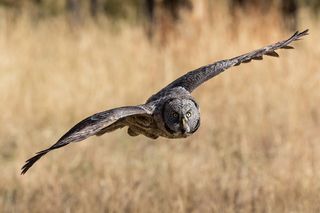
Owls are famous for their nocturnal lifestyles, but not all owls are night owls.
Some owls are diurnal, meaning that they hunt during the day. This includes the great gray owl (Strix nebulosa, pictured here), northern hawk owl (Surnia ulula) and northern pygmy owl (Glaucidium gnoma), Marc Devokaitis, a public information specialist at the Cornell Lab of Ornithology in Ithaca, New York, told Live Science previously.
Perhaps these birds are daytime hunters because their preferred prey, such as songbirds or small mammals, are also diurnal. Moreover, owls are close relatives with hawks, which are diurnal birds. But it's unclear whether the common ancestor of owls and hawks was diurnal, like the hawk, or nocturnal, like most owls, Devokaitis said.
Owls have Impressive necks
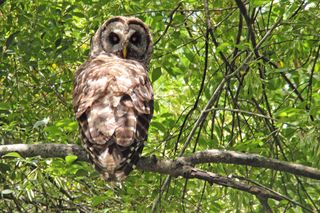
Owls have 14 neck vertebrae, which is twice the number that humans have. This unique anatomy helps owls — such as the barred owl (Strix varia), pictured here — turn their heads 270 degrees.
Owls can pull off this feat because their vertebrae have holes that are about 10 times the size of the animals' blood-carrying arteries. With so much wiggle room, the arteries can easily pass through the vertebral holes when the owl turns its head, Live Science previously reported.
This ability is key to the bird's survival: Owls cannot easily move their eyes, so they need to pivot their necks to look around.
The largest owl is extinct

The largest owl on record is Cuba's extinct giant owl (Ornimegalonyx), modeled here at the American Museum of Natural History's "Cuba!" exhibition.
Experts aren't sure whether the 3.6-foot-tall (1.1 meters) owl could fly, but its powerful, long legs indicate that it was a gold-medal runner. If it could fly or glide, it would have been one of the largest flighted birds the world has ever known.
Researchers have found (Ornimegalonyx) remains in Cuban caves, usually surrounded by the remnants of the bird's prey, including sloths and now-extinct rodents known as hutias.
Owls are helping Mideast peace
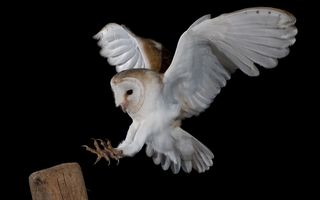
Barn owls (Tyto alba) are bringing peace to the Middle East, or at least they're getting scientists and farmers on both sides to talk and cooperate with one another.
These birds of prey are star rat and vole catchers, prompting farmers in Israel, Jordan and the Palestinian territories to put up owl nesting boxes.
A pair of owls can eat up to 6,000 rodents a year, which means that farmers don't need to use as many toxic pesticides to protect their crops, Live Science previously reported. The collaboration is still expanding, and a pilot program between Israel and Cyprus is already in the works.
Some owls have fake eyes
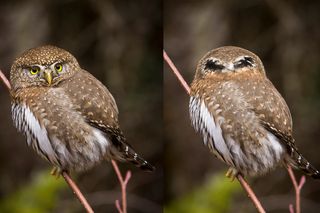
The northern pygmy owl has bright yellow eyes on its face … and black-colored feathers on the back of its head that look like creepy, watching eyes.
These "eye" spots may "slow down or deter predators coming at them from behind," McGowan told Live Science. "Predators don't like to attack if their prey is looking at them, and eye spots can slow them down."
Remember, the northern pygmy owl is active during the daytime, so predators will get an eyeful of its eyes no matter which way they approach this little owl.
Owls aren't waterproof

It's rare to see an owl hunting in the rain.
"They have given up the oil found in many feathers, which protects other birds form rain, for soft, silent feathers more valuable for stealthy hunting," wrote Leigh Salvez in "The Hidden Lives of Owls" (Sasquatch Books, 2016).
Simply put, "the fluffy body feathers of owls soak up a lot of water," McGowan told Live Science.
Owls recycle nests
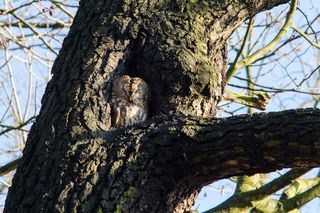
Owls are moochers when it comes to nests. They don't build their own, but rather use nests or tree cavities left behind by other birds, such as pileated woodpeckers or northern flickers, Salvez wrote.
Some great horned owls (Bubo virginianus) even live in holes made by gilded flickers and gila woodpeckers in the giant saguaro cactus, Live Science previously reported.
Likewise, the burrowing owl (Athene cunicularia) doesn't dig its own burrows, with the exception of a subspecies found in Florida, Salvez wrote. In the American West, these long-legged owls live in abandoned prairie dog or badger holes, she noted.
Owls have opposable toes
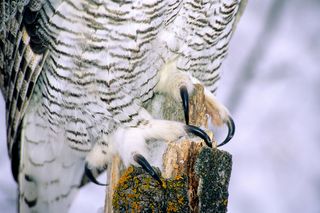
Owls have zygodactyl talons, which means they have TWO "opposable thumbs," of sorts.
For owls, two talons point forward, and two point back. "The 'moveable' toe actually is more about extending to the side than going forward or back," McGowan told Live Science. "It makes a complete circle of claws when catching prey."
Snowy owls fly great distances
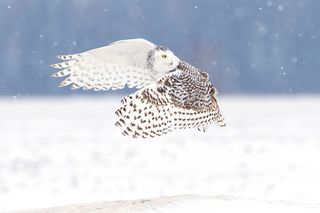
Snowy owls (Bubo scandiacus) usually live in the Arctic, but every so often, these magnificent birds fly south — a journey that's known as an irruption.
One of the largest irruptions of the past century occurred during the winter of 2013-2014, with reports of snowy owls as far south as Florida and Bermuda, according to Project SNOWStorm, which studies and tracks snowy owls. One such owl the project tracked is named Baltimore, who is the star of a video posted to YouTube.
Another snowy owl even flew nearly 3,000 miles (4,800 kilometers) to Hawaii, where it landed at Honolulu International Airport on Thanksgiving Day, 2011, Salvez wrote. But fearing the owl would collide with an airplane, federal officials killed it.
"It's the first ever in Hawaii, and they shot it!" Denver Holt, director of the Owl Research Institute in Charlo, Montana, told The New York Times.
Sign up for the Live Science daily newsletter now
Get the world’s most fascinating discoveries delivered straight to your inbox.

Laura is the archaeology and Life's Little Mysteries editor at Live Science. She also reports on general science, including paleontology. Her work has appeared in The New York Times, Scholastic, Popular Science and Spectrum, a site on autism research. She has won multiple awards from the Society of Professional Journalists and the Washington Newspaper Publishers Association for her reporting at a weekly newspaper near Seattle. Laura holds a bachelor's degree in English literature and psychology from Washington University in St. Louis and a master's degree in science writing from NYU.
